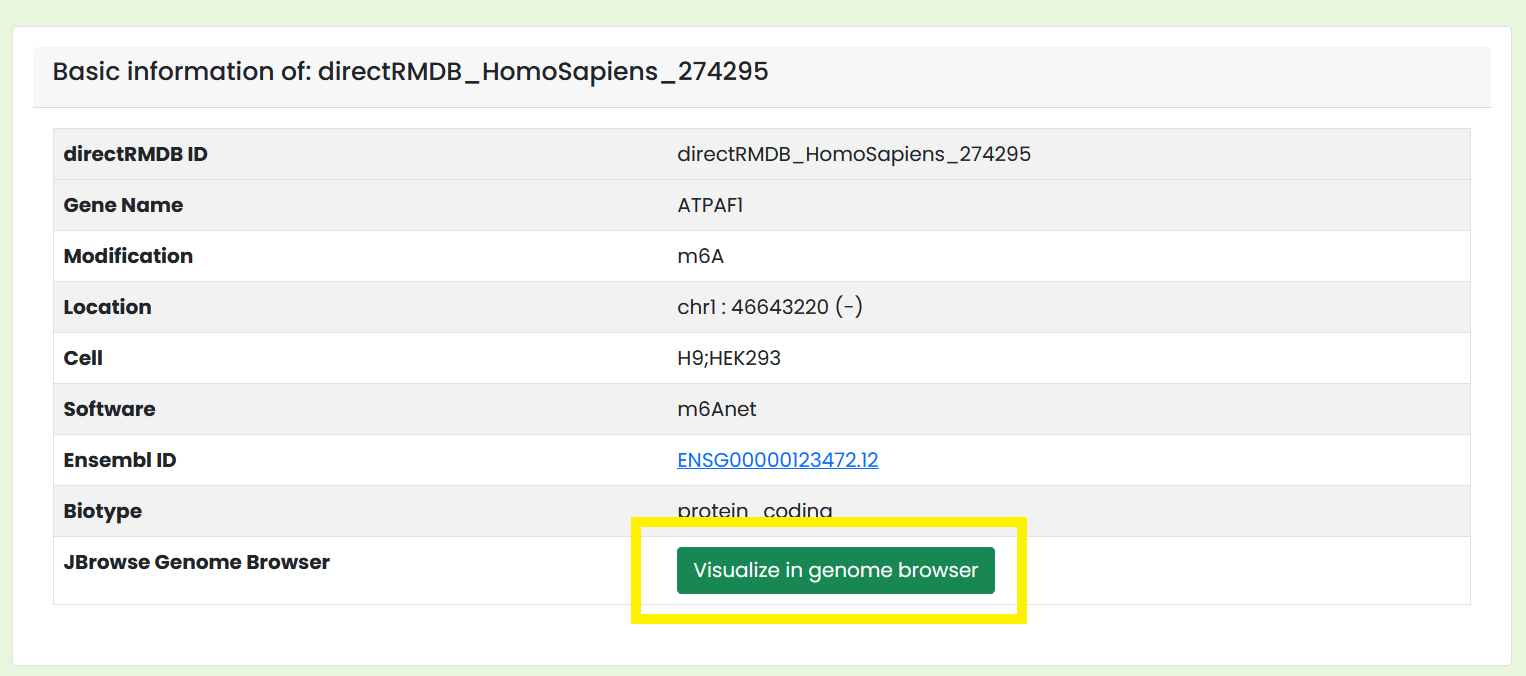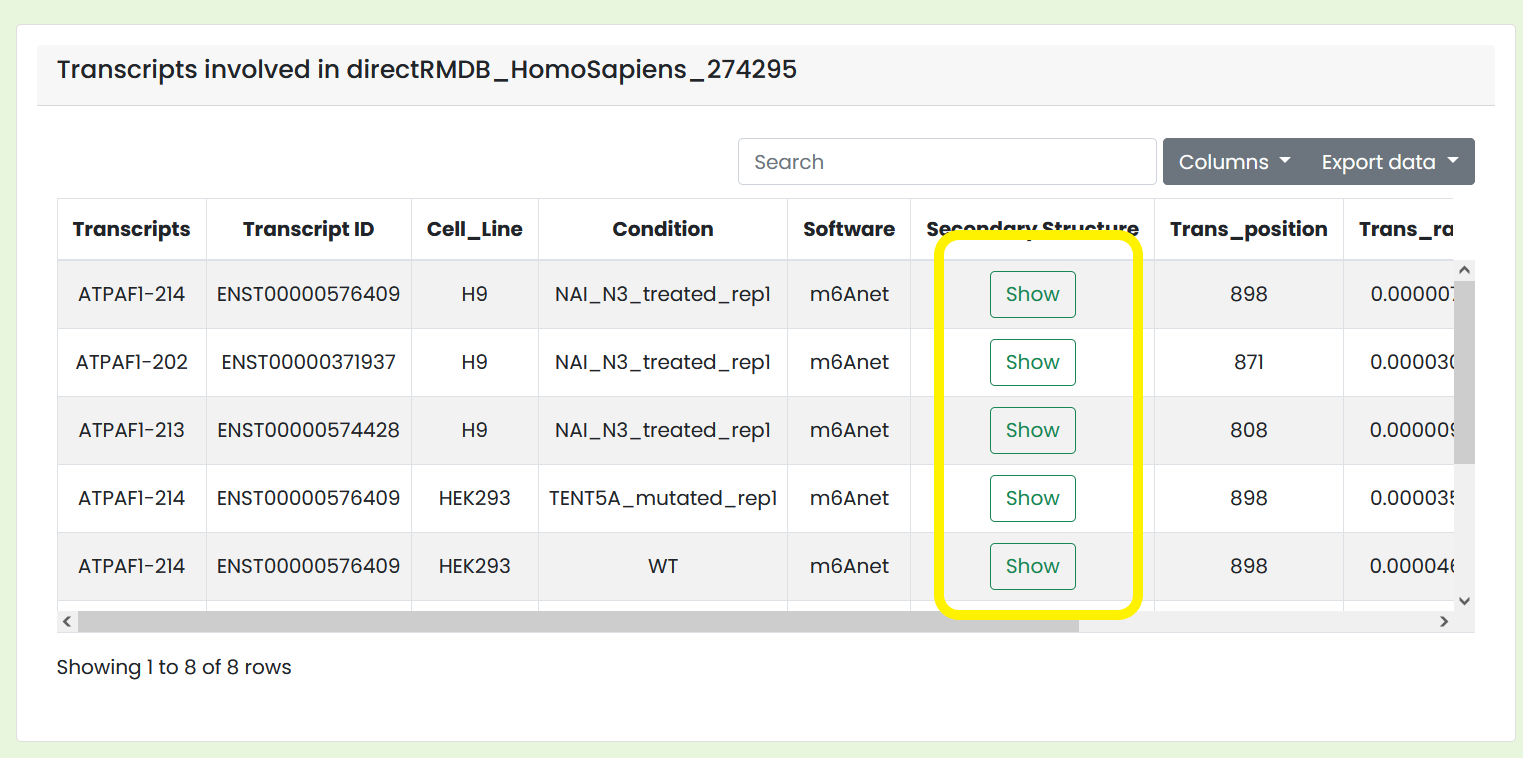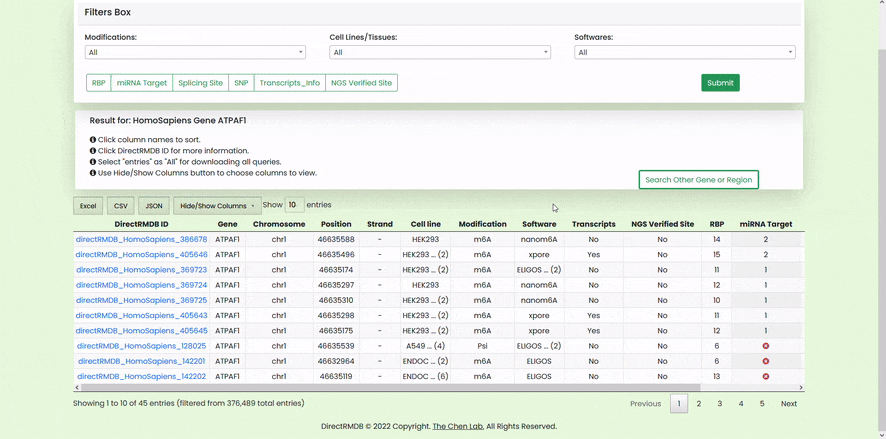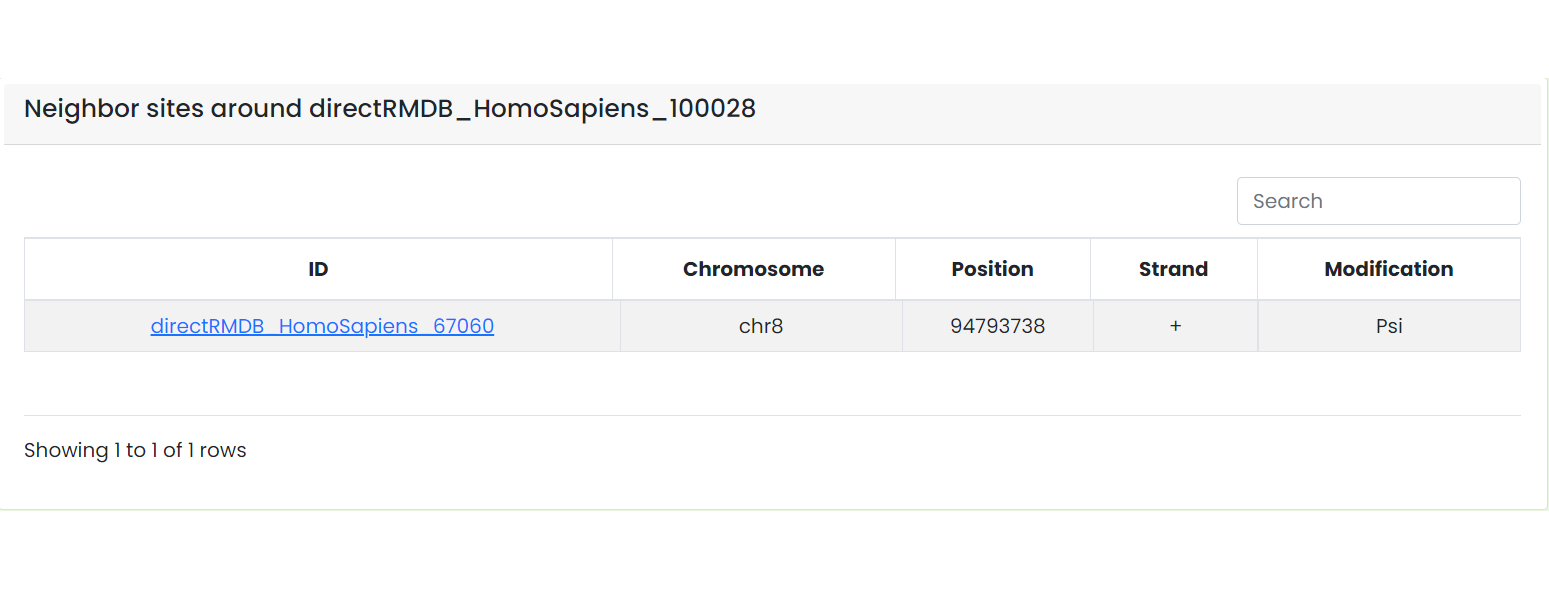Introduction
In the last few years, our ability to map RNA modifications has revolutionized our understanding of them and they are far more widespread than previously thought. Current technologies to map RNA modifications rely on high-throughput next-generation sequencing platforms and requires designed chemical treatment or immunoprecipitation methods. Direct RNA sequencing technologies, commercialized by Oxford Nanopore Technologies (ONT), enables the interrogation of any given modification present in individual RNA isoforms and has the promises to solve those commonly seen limitations of NGS-based methods. Here, we present the first ONT-based database of quantitative RNA modification profiles, DirectRMDB, which includes 16 types of totally 904,712 modification sites in 25 species identified from 39 independent studies.
User Guide
Search
On this page, we will guide you through the database for better use. If you have any questions, you could find our contact information on the contact page.
- DirectRMDB allows you to search by gene name or region on the chromosome.
- You could choose the species you are interested in from the dropdown list.
- Please provide a search keyword in the input box. You could provide a gene name or a region for a query. When you search for a gene region, please use this format: chromosome: start position..end position, e.g. chr1: 1..12345.




Result
- Results match your search critera will be returned.
- You could narrow down the results by filters on top of the page.
- You could hide/show columns to have a better view of the data.
- If you click the DirectRMDB ID on the result page, it will bring you to a detail page with more information about the site.
- In the detail page, you could find more information about the site. There is a jbrowse link which will allow you to visualizing the site and related RBP, miRAN, splicing sites, and SNP.
- For human and mouse sites, we provide you transcripts information invovle the site and secondary structure of them.
- Since nanopore sensor protein takes a k-mer (4-6nt) sequence as input each time, the presence of non-canonical bases could cause misleading signals thus influent the deconvolution of adjacent bases. To warn the potential false positive caused by adjacent modification signals, we indicated the number of modification sites 5bp upstream and downstream of each site. Detailed neighbor site information can be found on the details page







Repository
- An overview of the data can be found in repository section. You could view data by species or add filters to narrow down your query. As explained in the result section, you can also use hide/show columns function to add or remove columns on the view or download the query. Click the DirectRMDB ID will also take you to the detail page.

Jbrowse
- We embeded Jbrowse2 genome browser in our website for visualizing data. You could browse all features we provided on the jbrowse page.
- For more information of Jbrowse2, you could visit JBrowse2 User Guide.
- You could choose a species to browse by name
- Select a view to launch. The default and most commonly used view is linear view.
- Enter sequence name, feature name or location to lauch the assembly.
- Click ‘OPEN TRACK SELECTOR’ and select the data you would like to show in the browser




Download
- You could download all data from the download page. We also provide you a table with genome versions used for alignment.
- Unlabelled sites reported were also provided for downloading.


Citation
- We will be very happy if DirectRMDB can help you with your research. If you use DirectRMDB in any published paper,
please cite the most recent DirectRMDB paper:
Primary sequence-assisted prediction of m6A RNA methylation sites from Oxford nanopore direct RNA sequencing data
Yuxin Zhangab, Daiyun Huang, Zhen Wei, Kunqi Chen, Methods, 2022, ISSN 1046-2023, https://doi.org/10.1016/j.ymeth.2022.04.003
- You can find our other related works on the citation page.
